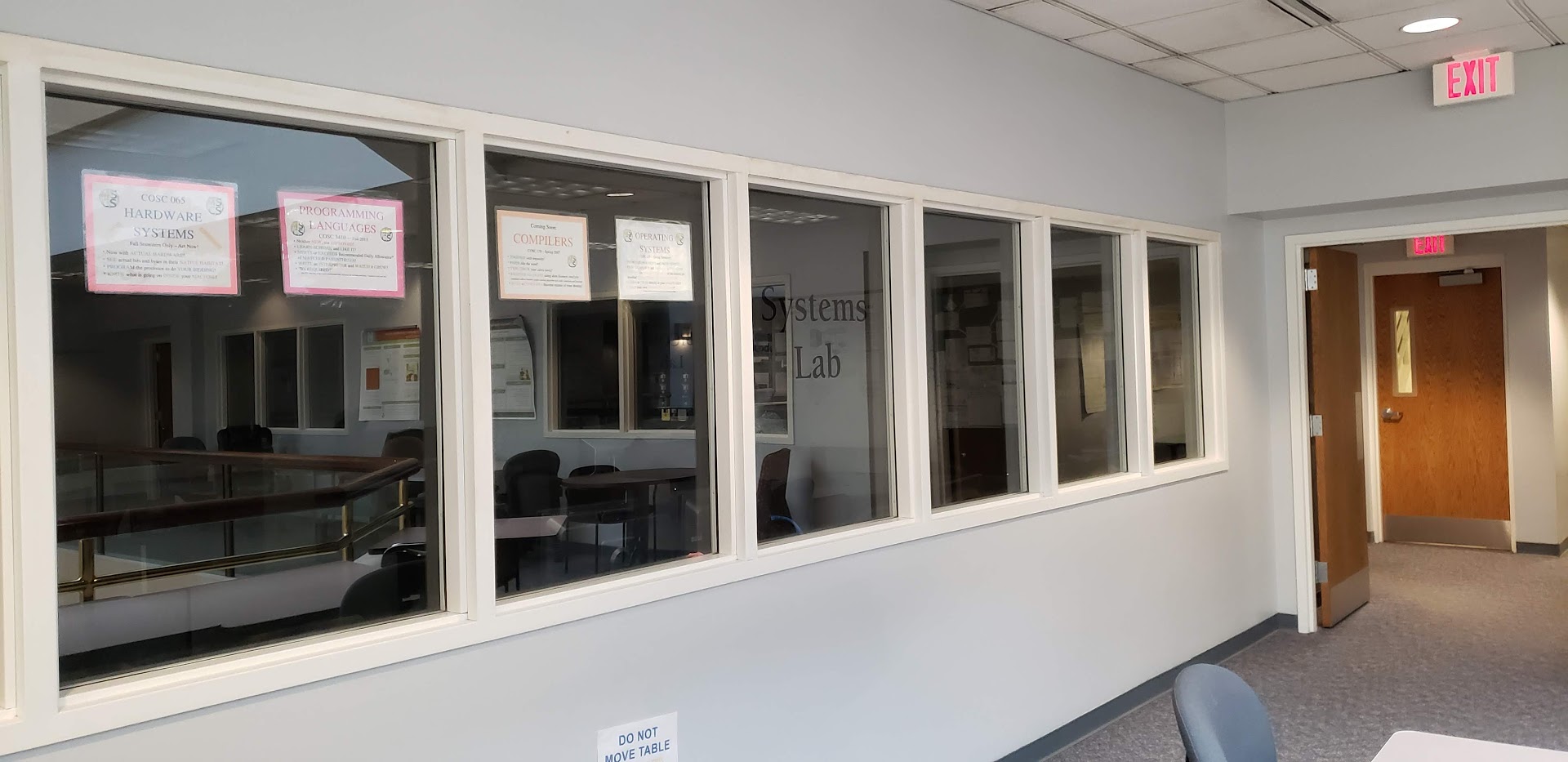Welcome to our wonderful Systems Lab!
On the third floor of Cudahy Hall

Description
In today's lab -- our first lab -- you will get familiar with the equipment and build your own simple circuit.
Safety First
You are dealing with live power. Be mindful of the current and voltage you are supplying to the circuit. A shock of 0.01A of current will hurt, and a shock of 0.09A will send you to the hospital, or worse. Keep water and other liquids off of your working surface. After building your circuit, you should only be touching the power switch of the PSU. If it did not operate as expected, first power off the PSU, and then operate on the circuit. In addition to your own safety, supplying a safe amount of voltage (4.9 to 5.0V) will ensure the full operation of your electrical components (LED, logic gates, etc), as they can handle a load of up to 5V before becoming damaged.
Lab Partners
These lab pairs are randomly generated. If you are not on this list, it means you are not officially enrolled in the course. If this is so, please email me, and let the present TA know -- we'll fit you in.
If you like your pair, you can thank Python's "shuffle" function in its random library. If not, you may switch partners with someone else as long as the agreement is mutual -- just give me a heads up so I can update the record. Otherwise, I'll assume you're happy in your pair and it'll be kept for the rest of the semester.
Note: Because working in pairs on homework assignments is optional, you can choose who to work with on the assignments (if any). Thus, lab pairs need not be the same as assignment pairs.
Click here to see the listed lab pairs.Procedures
Find your lab partner. Then, your TA will show you the following components:
- DC power supply unit (PSU)
- Solderless breadboard
- Hot and cold "banana plugs" for PSU-to-breadboard connection
- Wires and LEDs
- Resistors (1kΩ should be used in this lab for limiting current to LED)
After your TA explains how a solderless breadboard works, you will use necessary components to design a circuit that turns on an LED when power is supplied. After you are finished, show a demonstration to the TA. If your implementation is correct, you may leave lab. As the syllabus states, every pair must show a demo to the TA at least once. Of course, if your demo is unsatisfactory, you may improve and continue to show demos until it is correct, or until time runs out. If time runs out and you have made a clear effort to solve the lab, full points will be rewarded. The TA will help guide you toward receiving full points.
Before you leave the lab, you will keep your breadboards in the state they are in. Since not all breadboards are labeled, please place your completed circuit on the shelves (by the door) and on a sheet of paper with your group names on it.